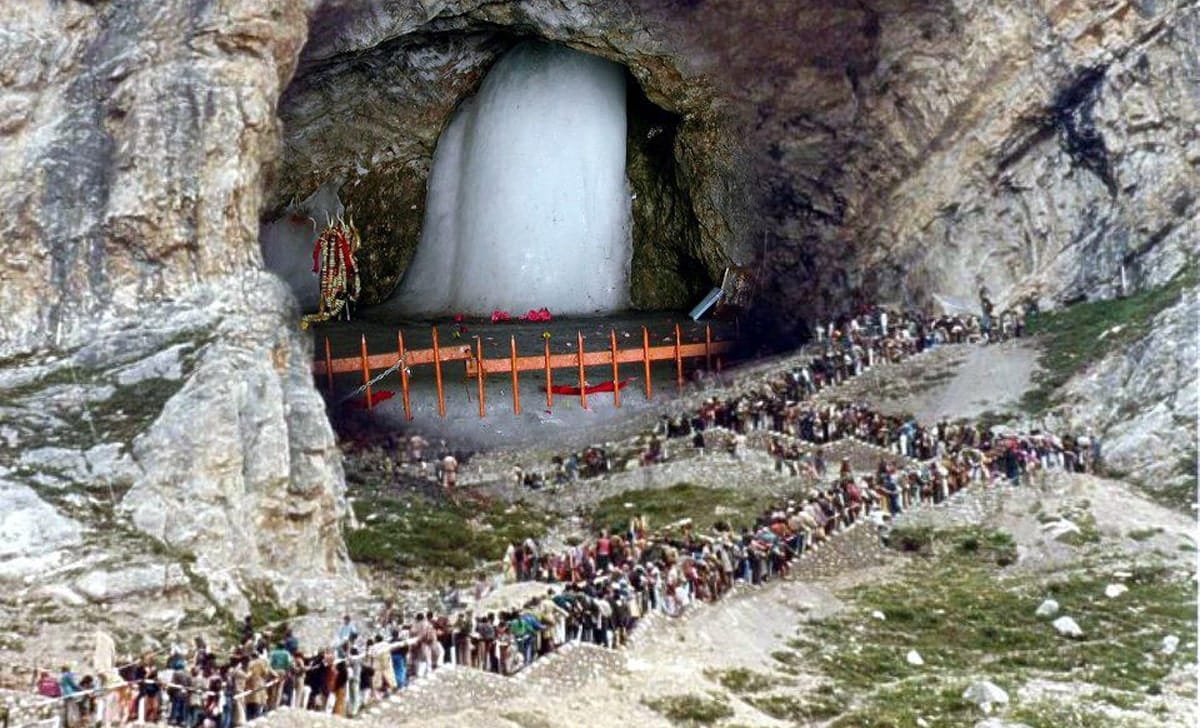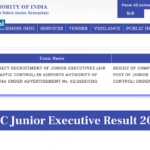The highly revered Amarnath Yatra, dedicated to Lord Shiva and his sacred ice-lingam shrine in the Himalayas, is all set to commence on July 3, 2025. This 38-day pilgrimage attracts lakhs of devotees from across India and abroad. In response to growing security challenges and recent incidents of violence in the region, the Jammu and Kashmir administration has rolled out one of the most robust security plans in the Yatra’s history.
📍 Massive Security Deployment Across Jammu
To ensure foolproof safety for pilgrims, over 180 companies of Central Armed Police Forces (CAPF) have been deployed in Jammu division alone, as confirmed by Inspector General of Police (IGP) Jammu Zone, Bhim Sen Tuti. This marks an increase of 30 more companies compared to the previous year’s deployment.
These companies are strategically distributed across five critical districts: Jammu, Samba, Kathua, Udhampur, and Ramban. These locations form the vital corridor for yatris traveling from mainland India towards the Kashmir Valley.
Key security arrangements include:
- Deployment at gateway entry points like Lakhanpur in Kathua district, which acts as the main entry for visitors from other states.
- Daily road opening patrols (ROPs) on vulnerable highway stretches to ensure the safe and uninterrupted movement of yatri convoys.
- Enhanced deployment in historically sensitive zones, which have witnessed disturbances in previous years.
The increased number of paramilitary personnel reflects a deliberate and tactical approach to counter any emerging threats during the Yatra period.
🚐 Mandatory Convoy-Based Movement for Pilgrims
A significant highlight of this year’s Yatra is the strict enforcement of convoy-based movement for all pilgrims. According to IGP Tuti, no individual yatri or private vehicle will be allowed to travel independently towards the shrine.
All pilgrim groups must start their journey from Bhagwati Nagar Base Camp in Jammu, the designated starting point for Amarnath pilgrims.
Every day, two separate convoys will depart for the two main pilgrimage routes:
- Pahalgam Route: Covering approximately 48 kilometers, this is the traditional path, preferred by many for its gradual terrain and scenic beauty.
- Baltal Route: A shorter but steeper 14-kilometer stretch, suitable for those wanting to complete the trek within a day.
This structured system minimizes the risk of ambushes, stray attacks, or accidents along isolated road sections.
🔎 Multi-Tier Security Cover
To complement the heavy deployment of CAPF, authorities are implementing a multi-layered security model:
- Road Opening Patrols (ROPs): Deployed daily before the movement of any convoy to check for hidden explosives, suspicious objects, or sabotage attempts.
- Static Checkpoints and Mobile Patrol Units: Positioned at key highway crossings, market areas, and bottleneck points along the pilgrimage corridor.
- CCTV Surveillance and Control Rooms: A dedicated network of surveillance cameras ensures 24×7 monitoring along critical stretches, including pilgrim rest areas and Langar points.
- Aerial Surveillance: Drones will conduct real-time monitoring over the convoy routes, camp sites, and sensitive mountain passes.
- No-Fly Zone Enforcement: From July 1 to August 10, the entire Yatra route has been declared a no-fly zone for drones, balloons, and paragliders to prevent aerial surveillance by hostile elements.
These measures aim to provide both psychological reassurance to pilgrims and operational advantage to security forces.
🛡️ Response to Recent Threats
The heightened security arrangements come in the backdrop of a terrorist attack near Pahalgam earlier this year, which resulted in civilian casualties. Following this, the government launched Operation Sindoor, focusing on both counter-terrorism and counter-infiltration activities in South Kashmir and adjoining areas.
Further strengthening the security grid, the Centre has approved deployment of 581 CAPF companies across Jammu and Kashmir, which roughly translates to over 58,000 paramilitary personnel.
Along with the CAPF, an additional 50,000 CRPF troops, specialized K9 dog squads, bomb disposal units, sniper teams, and mobile commando groups are being stationed along the pilgrimage route.
🗓️ Yatra Timeline and Pilgrim Numbers
The 2025 Amarnath Yatra will run from July 3 to August 9, spanning 38 days. According to official figures, more than 3.5 lakh pilgrims had registered for the Yatra by May 2025.
The first convoys from Jammu will roll out on July 2, a day before the official start.
Pilgrims will have the choice of two trekking routes:
- Pahalgam Route: Known for its gradual ascent and camping opportunities at locations like Chandanwari, Sheshnag, and Panjtarni.
- Baltal Route: A quicker ascent but physically more demanding, often used by pilgrims opting for helicopter services to Panchtarni.
Medical facilities, oxygen booths, langar services, resting tents, and sanitation points have been established at key locations en route.
🚨 Focus on Anti-Narcotics and Local Vigilance
The police chief also highlighted the growing concern over narco-terrorism in the Jammu region. Authorities believe narcotics trade is being used by terrorist organizations to fund subversive activities.
In light of this, anti-drug operations have been intensified. Law enforcement agencies are conducting:
- Community awareness programs to educate locals against drug trafficking.
- Regular crackdowns and surprise checks in known narcotics transit areas.
- Increased coordination with intelligence wings to monitor suspicious activities along the Yatra corridor.
Pilgrims are also advised to remain vigilant and report any unusual behavior or unattended objects.
🕰️ Historical Security Challenges
The need for such stringent security measures is rooted in the history of attacks on the Amarnath Yatra:
- 2000 Pahalgam Massacre: Over 90 people, including pilgrims and local porters, were killed in one of the deadliest attacks on the Yatra.
- 2002 Anantnag Massacre: More than 30 pilgrims were killed during a night-time assault at the Nunwan base camp.
- Sporadic grenade attacks and sniper incidents have also occurred over the past two decades.
These tragic events have shaped current day Standard Operating Procedures (SOPs) for Yatra security.
📝 Official Guidelines for Pilgrims
Authorities have issued the following mandatory advisories for all pilgrims:
- Travel only in official convoys from Bhagwati Nagar, Jammu.
- Carry valid ID and Yatra registration documents at all times.
- Do not stray from the convoy or take alternative routes.
- Follow all instructions from the police, CRPF, and CAPF personnel.
- Adhere to scheduled convoy timings. Latecomers will not be allowed to move.
- Do not carry drones, balloons, or other airborne devices.
- Stay updated with weather forecasts and public announcements.
Pilgrims are further encouraged to download Yatra-specific mobile apps providing real-time alerts, route updates, and health advisory notifications.
🏕️ What to Expect Along the Route
Pilgrims will witness:
- Increased frisking and baggage checks at every checkpoint.
- Sniffer dogs scanning vehicles and luggage for explosives.
- Mobile surveillance units shadowing the convoys.
- Quick Reaction Teams (QRTs) ready to respond to any emergency.
- Deployment of medical first-response teams along steep or accident-prone segments of the route.
The entire region is under continuous air and ground surveillance.
✅ Conclusion
With over 180 paramilitary companies in place across Jammu, supplemented by thousands more in the Valley, the Amarnath Yatra 2025 is set to become one of the most heavily guarded religious pilgrimages in India’s history.
The security arrangements reflect a balanced mix of vigilance, preparedness, and respect for the pilgrims’ spiritual journey. Authorities urge pilgrims to cooperate fully with security forces, follow guidelines strictly, and maintain patience throughout the Yatra.
As the region stands united to ensure the safety and sanctity of this annual spiritual event, the Amarnath Yatra 2025 is all set to offer a peaceful, secure, and fulfilling pilgrimage experience for devotees worldwide.










